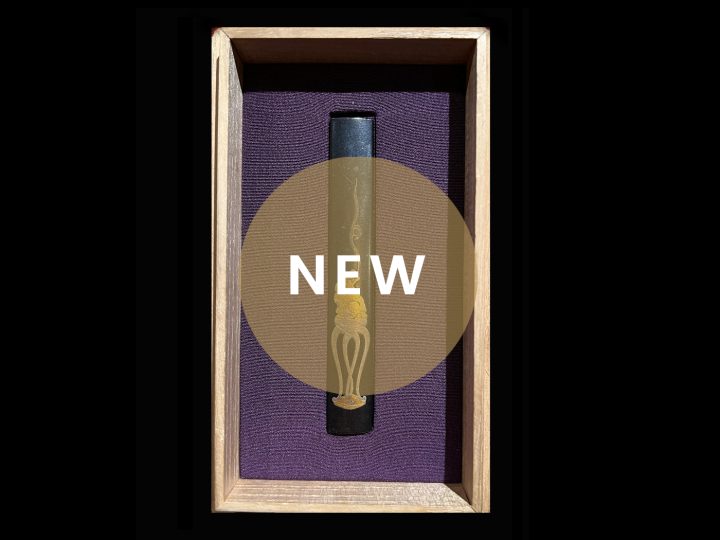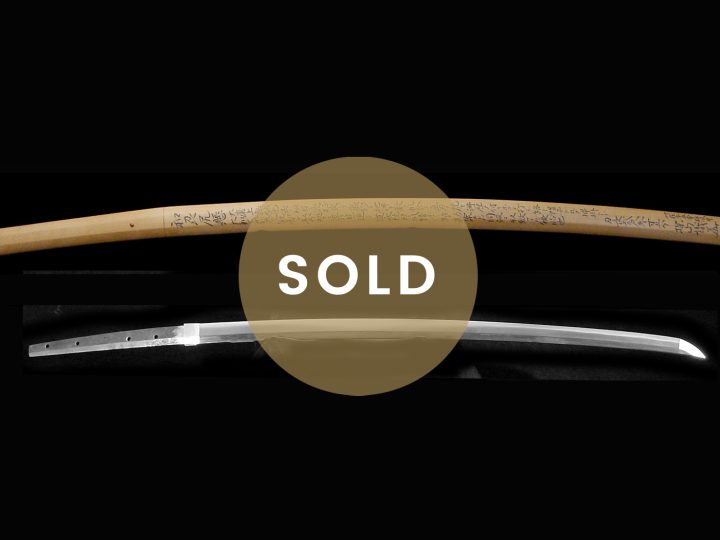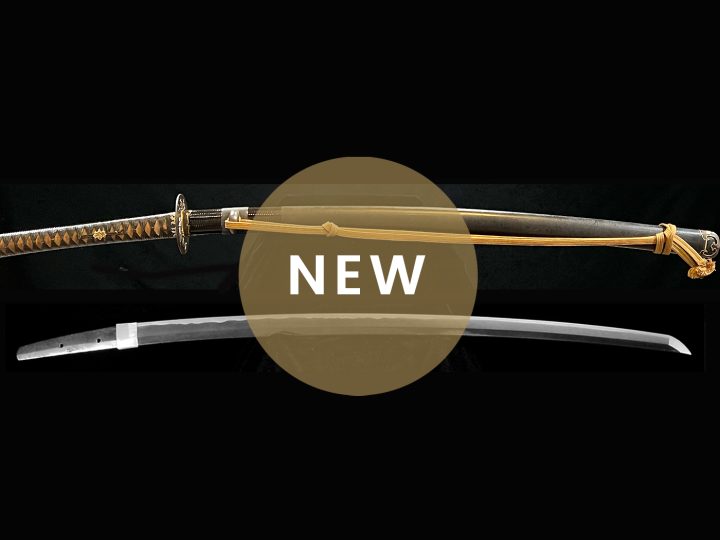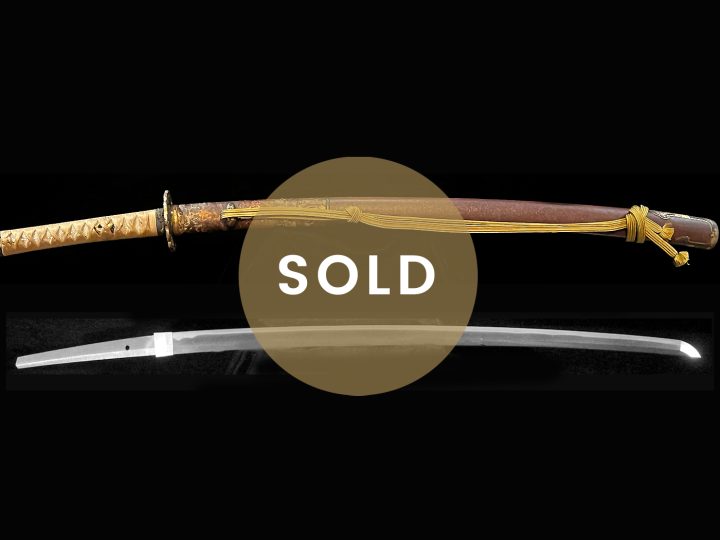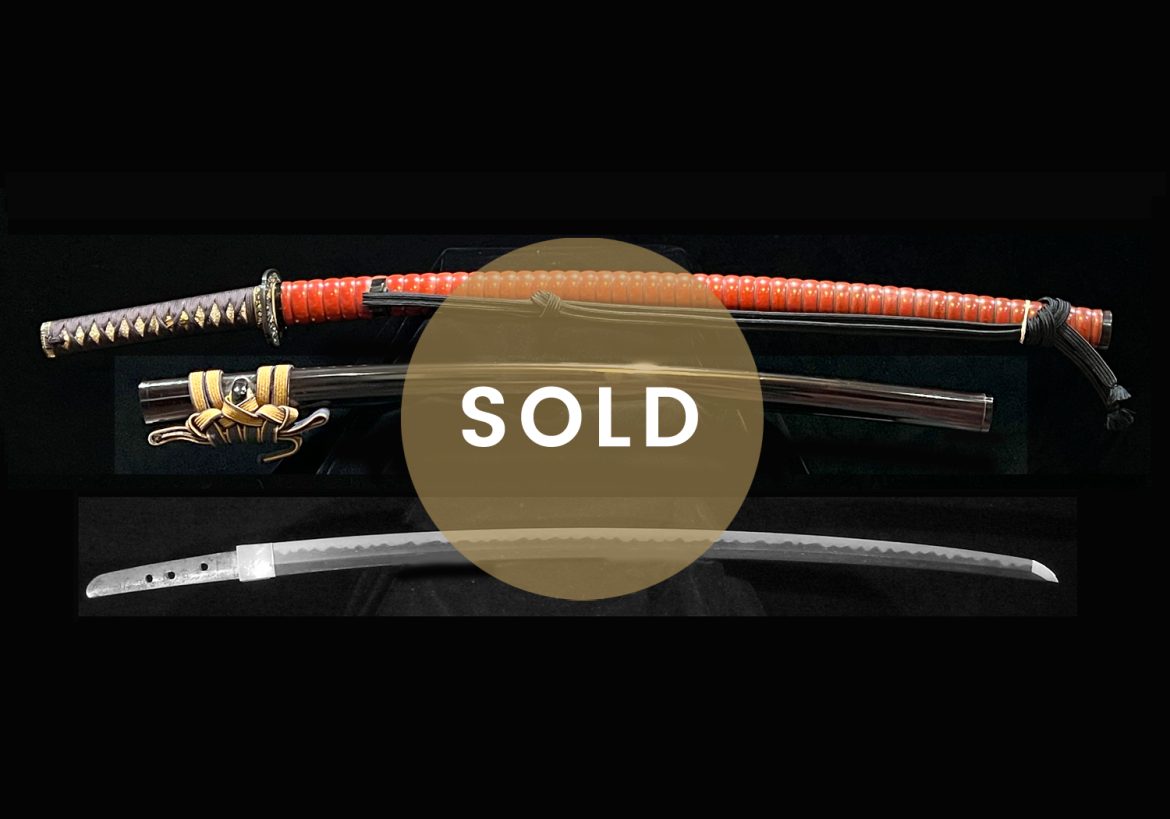
Nihonto.com is very pleased to present a very interesting sword that dates back to the middle of the Muromachi era (circa 1469). It is what is known as an uchi-gatana (one-handed katana) that was popular during that period in Japanese history. The fact that it is ubu (unshortened nakago) and bears the smith’s full signature makes it especially important as a historical reference piece. The blade is signed Nôshû Jû Senjuin Dôin (濃州住千手院道印). This smith later changed his name to Nôshû Jû Senjuin Michiaki (濃州住千手院道明). We don’t know much about him except that he was the son of Kuninaga (国永) and, as noted, he lived in the middle part of the Muromachi Era. What we do know, however, is that he left us a wonderful piece of history.
This blade has a nagasa (cutting edge length) of 24 3/16 inches or 61.4 cm. The moto-haba (width at the base of the blade) is 1.05 inches or 2.67 cm and the saki-haba (width at the point is 0.6 inches or 1.52 cm. Thus we have a significant narrowing of the blade as it approaches the point. This is indicative of older blades. The sugata (shape) of the blade is shinogi-zukuri with a torii sori (curvature) of 0.68 inches or 1.73 cm.
As noted, this blade is from the second half of the 15th century. The hada (forging style) is itame mixed with mokume. The hamon (tempered edge) is done in nie-deki in an irregular rounded pattern called gunome-midare with areas of togariba as one would expect in blades from the Mino school of forging. The bôshi (point) has a temper done in ko-marustyle (small rounded) which turns back down the mune (back of the blade) in a short kaeri. There are some spots of temper along the mune (back edge) of the blade which add to its beauty. The nakago is ubu (unshortened) and slightly machi-okuri (the habaki has been slightly moved up on the blade). The overall shape is light and graceful as it should be, as it was meant to be wielded by a Samurai using one hand. There are three nakago ana (holes in the tang) showing that it has been re-mounted many times throughout its over 500 year existence.
This blade is in very good Japanese polish and a well-made shirasaya. It has what appears to be a solid gold habaki of moderate karat content. This blade comes with an excellent set of koshirae (mountings). In fact, it comes with two saya(scabbards) which is a plus. One is what is known as an ebi saya that is done in red lacquer and is ribbed resembling the shell of an ebi (shrimp). The second saya is lacquered black in a more subdued and traditional style. All of the kodogu(metal parts of the mountings) are done in the style of the Mino school. The have gold, silver, and shakudo flowers on a rich dark shakudo metal base. Very attractive indeed.
This is a well-known blade that has been published in several books. It was published in Mino Toho Kenkyû, Muromachi Go. This translates as A Study of Mino Smiths of the Muromachi Era. It was also published is Honami Koson’s Oshigatabook published in Showa 20 (1945). Please see photos of both publications below.
This blade was awarded an NBTHK Tokubetsu Hozon certification in 1988. This certification attests to its quality, condition, and the validity of its provenance. An interesting side point about this certification is that when the NBTHK issued it in 1988, they mistakenly listed the smith’s signature as reading Nôshû Jû Senjuin Michinaga (濃州住千手院道永).The kanji on the tang of the sword, however, clearly reads Nôshû Jû Senjuin Dôin (濃州住千手院道印)which is the smith’s earlier signature. They corrected this oversight with a notation that was written on the back of the original certification (as shown below) in the 5th year of Reiwa (2022), thus acknowledging this interesting error.
If you are looking for a Kotô sword from the time in Japanese history when there were constant battles being fought and sword use and knowledge was a matter of life and death, I highly recommend this fascinating sword for your collection:
SOLD






















